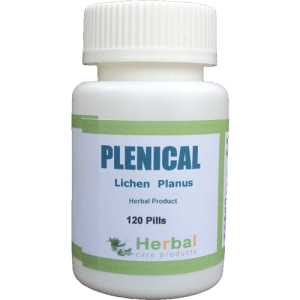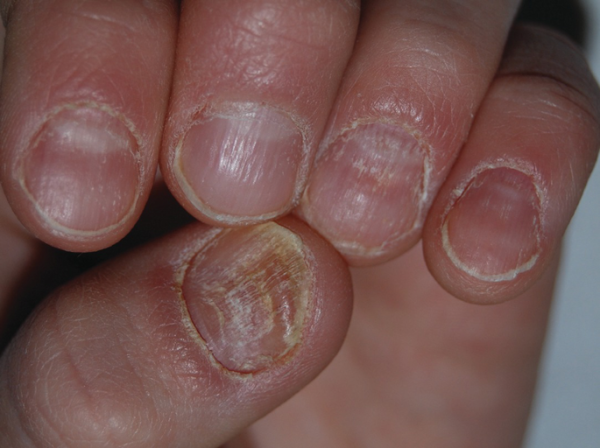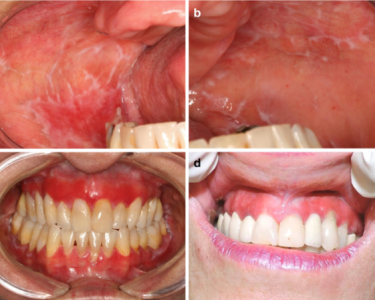Lichen Planus Nails – Symptoms, Causes, Diagnosis and Treatment
Lichen planus is an inflammatory skin disease that can affect several body parts. One of its manifestations is lichen planus nails. It is characterized by the appearance of white patches on the nail plate and can cause pain or discomfort if left untreated. The exact cause of lichen planus nails is still unknown, but there are some factors that may contribute to its development.
It is believed that autoimmune disorders, such as lupus, rheumatoid arthritis, or psoriasis, can be one of the triggers for lichen planus nails. Moreover, certain medications like antibiotics or non-steroidal anti-inflammatory drugs (NSAIDs) may be a factor in the development of this condition. Moreover, stress and hormonal changes have been linked to lichen planus nails.
In terms of diagnosis, it usually involves a physical examination by a healthcare professional. Different tests such as skin biopsy may be required to confirm the diagnosis. In order to manage this condition effectively it is important to identify and treat any underlying causes that could have contributed to its development.
What Causes Lichen Planus Nails?
Lichen planus nails is an autoimmune condition that affects the nails. It is characterized by white lines, ridges, and pitting in the nail bed that can lead to discoloration, thickening, and even detachment of the nail from the nail bed. While Lichen planus nails is poorly understood and mainly diagnosed through clinical diagnosis, it has been identified as a symptom of a few underlying causes. The primary underlying cause of Lichen planus nails is likely an inflammatory reaction or compromise to the immune system. When this occurs, it can lead to an overproduction and buildup of collagen in the skin and other tissues around the nail bed which can create ridges or pits in the nail. Stress has also been linked to this condition as emotional distress can cause a disruption in hormones which then triggers an immune response in some people. Additionally, certain medications like antibiotics and anti-inflammatory drugs have been associated with increased risk of lichen planus nails as well. The exact cause of lichen planus nails is still unknown but its symptoms are often treatable either through medication, lifestyle changes or other therapies depending on how severe the condition is and what it stems from.
How to Manage Lichen Planus Nails?
Lichen planus nails are a condition characterized by the inflammation of the fingernails and toenails, leading to discoloration or deformity. The exact cause of lichen planus nails is not known but the condition is thought to be an autoimmune disorder in which the body’s own immune system mistakenly attacks its own cells. This reaction may be triggered by allergens, certain medications, stress and other environmental factors. It is important to manage lichen planus nails as the condition can cause pain and discomfort. Here are some tips for managing lichen planus nails:
Treat Infection or Irritation
If infection or irritation is causing your lichen planus nails, it is important to treat it quickly. Your doctor may prescribe antibiotics or suggest topical treatments such as creams or lotions.
Protect your Nails
Protecting your nails from further damage is key in managing lichen planus nails. Wear gloves when working with harsh chemicals and use moisturizing creams and lotions on your hands and feet every day. Avoid applying nail polish or using artificial nails as they can make the condition worse.
Eat a Healthy Diet
Eating a healthy diet that includes plenty of fruits, vegetables, whole grains, lean proteins and healthy fats can help strengthen your body’s natural defenses against infection and inflammation.
Reduce Stress
Stress can weaken the immune system so it is important to reduce stress levels as much as possible in order to manage lichen planus nails. Exercise regularly, practice relaxation techniques such as yoga and meditation, get adequate sleep each night and make time for leisure activities that you enjoy. Managing lichen planus nails can help reduce pain, discomfort and unsightly nail discoloration. It is important to work with a healthcare professional who can provide personalized advice on how best to manage this condition.
Treatments for Lichen Planus Nails
The treatment for lichen planus nails will depend on its severity and symptoms. It usually involves topical creams or ointments containing corticosteroids or retinoids. If these treatments do not provide adequate relief from symptoms then oral medications such as immunosuppressants or antibiotics may be used.

In some severe cases surgical intervention might be necessary in order to remove affected areas of skin that are causing pain or discomfort. Additionally, lifestyle changes also play an important role in managing this condition effectively. It is important to avoid activities that put pressure on the skin such as long periods of time standing or sitting in one position.
Conclusion – Tips for Living with Lichen Planus Nails
Lichen planus nails can be a frustrating and uncomfortable condition that is often difficult to manage. The good news is there are steps you can take to help reduce the discomfort and keep the nails healthy. It is important to understand what causes lichen planus nails and how to manage it, so that you can make informed decisions about your care.
Although there is no cure for this condition, it can be managed with proper care and treatment. To start, it is important to identify the cause of lichen planus nails by talking to your doctor about any underlying medical conditions or medications which may be contributing factors. Once the cause has been identified, it is important to take steps to protect the nail bed by avoiding exposure to chemicals or other irritants, keeping the nails clean and dry, and wearing protective gloves when washing dishes or engaging in other activities which could lead to further irritation.
In addition, treatments such as topical ointments or steroid injections may be useful in reducing symptoms of lichen planus nail disease. It’s also important to talk to your doctor about any dietary changes that may help with symptom management. For example, certain foods have been linked with lichen planus flares, so eating a balanced diet could help reduce the risk of flare ups.
Finally, if you have lichen planus nails it is important that you take steps to ensure proper nail care. Regular trimming of your fingernails and cuticles can help prevent infection as well as minimize discomfort from the condition itself. Additionally, avoiding activities that put stress on your hands can also help prevent further damage or irritation of affected areas.
By understanding what causes lichen planus nails and how to manage them properly, you can take steps towards living a more comfortable life with this condition.




